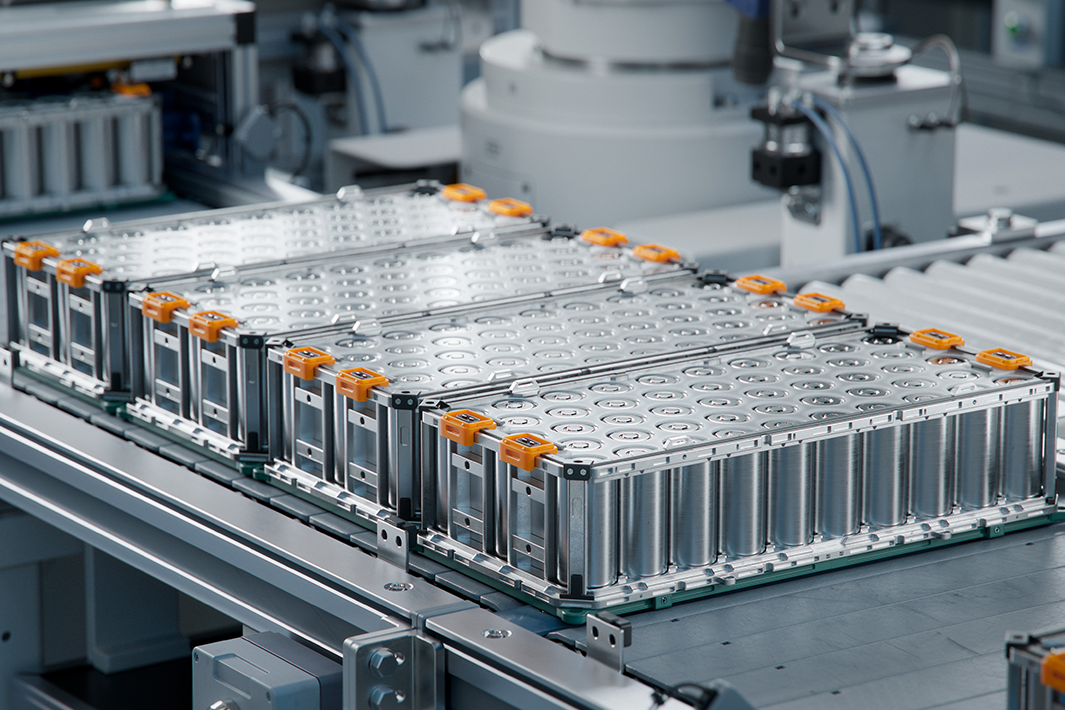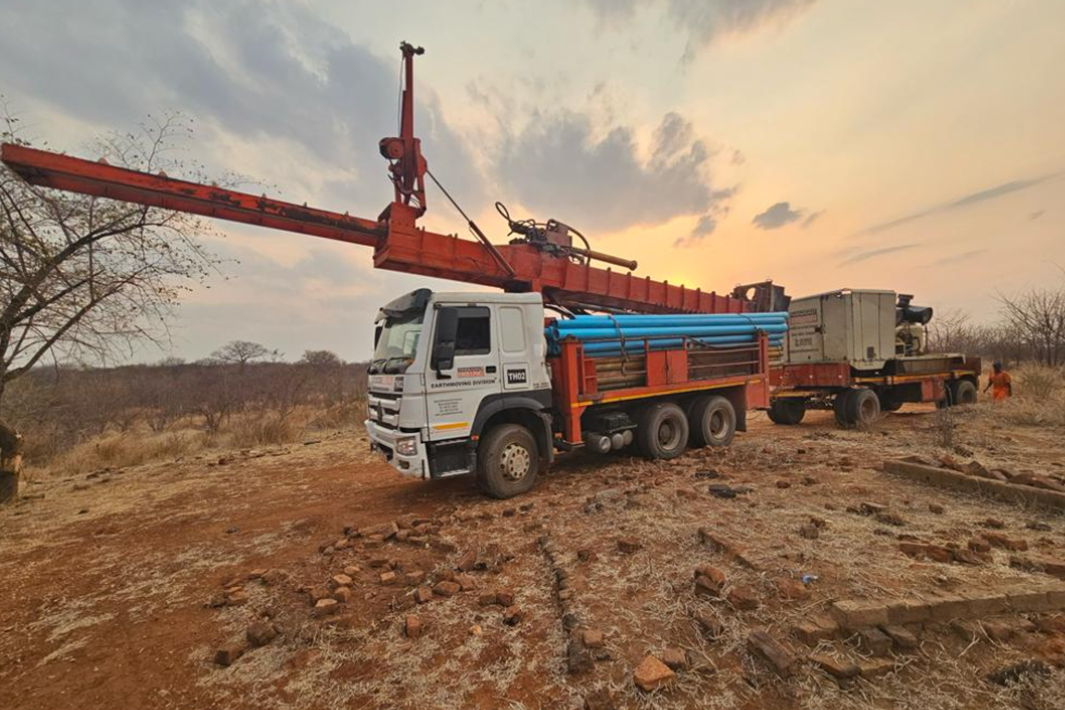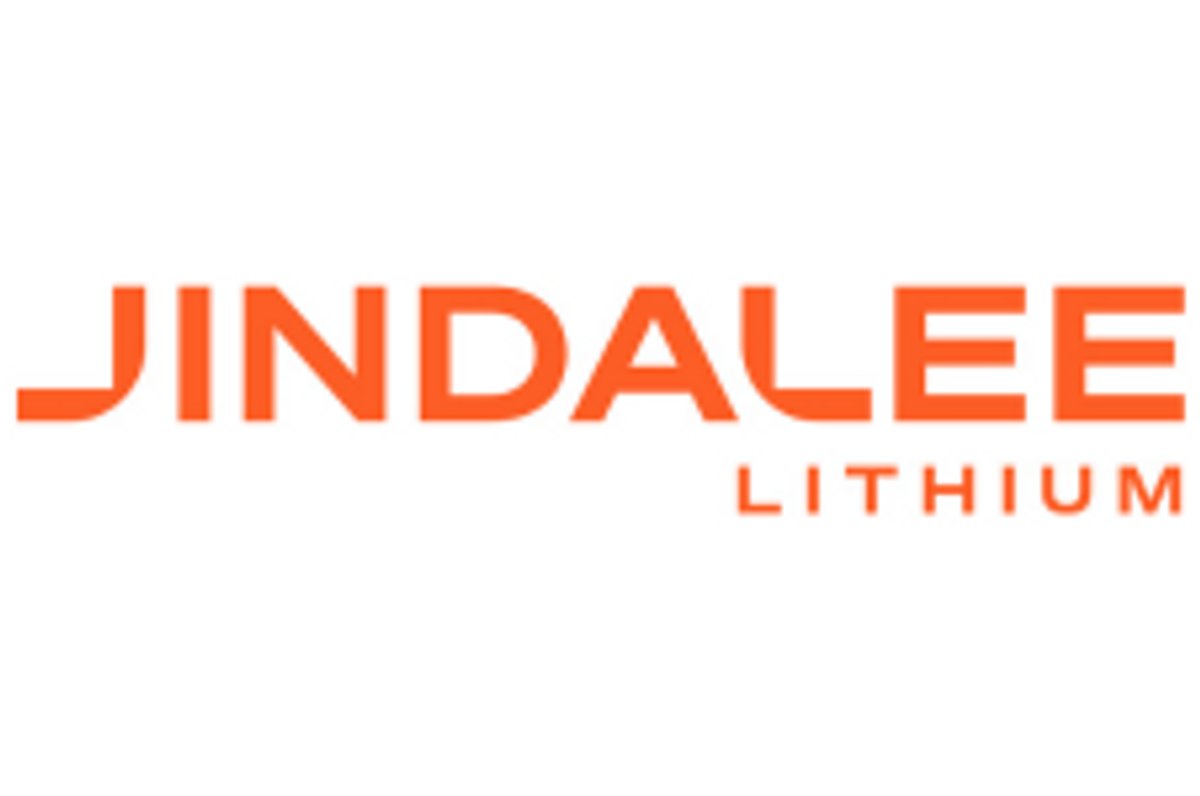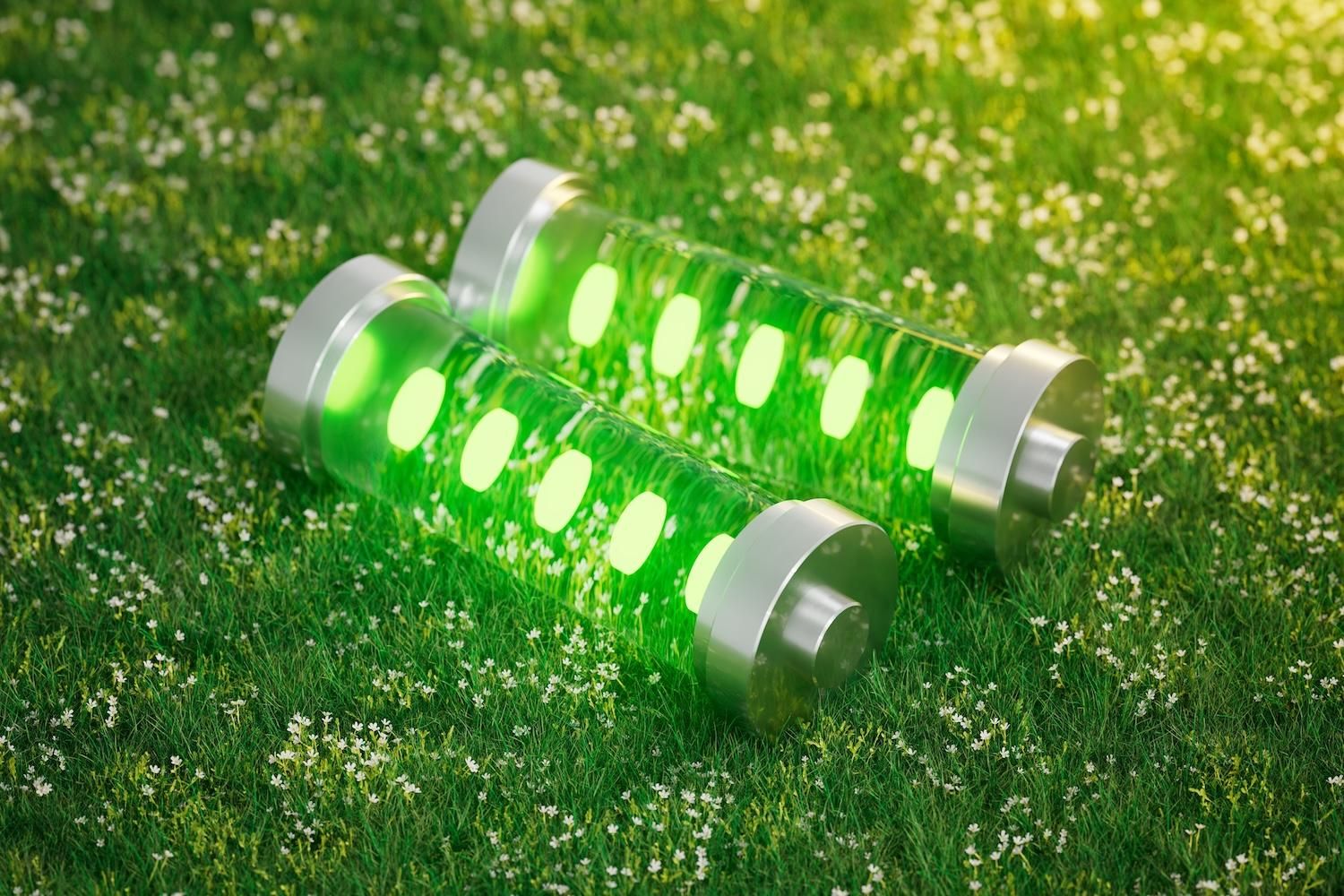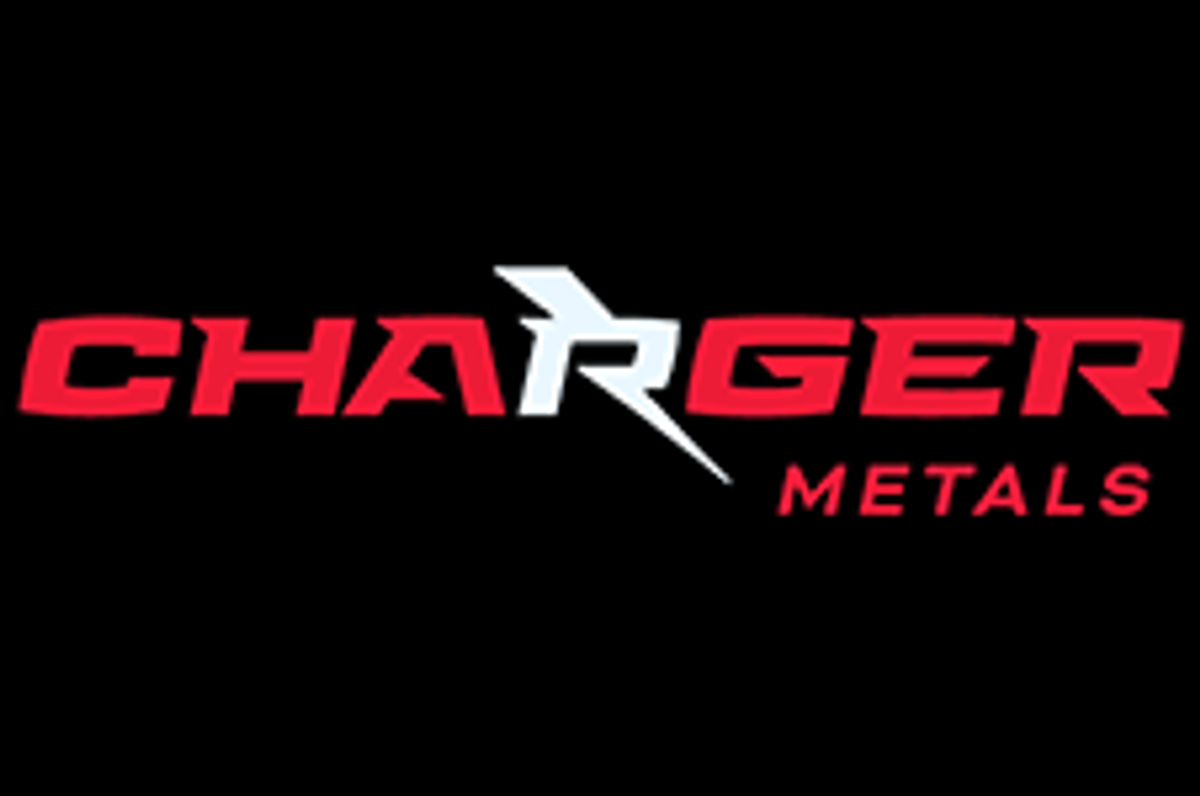
September 21, 2023
Charger Metals NL (ASX: CHR, ‘Charger’ or ‘the Company’) reports that it has received the majority of the outstanding assay results from the drilling completed at the Bynoe Lithium Project, Northern Territory, adjacent to the Finniss Lithium Mine owned by Core Lithium Ltd (ASX:CXO).
- Assay results have been received for 63 holes drilled across seven prospects at the Bynoe Lithium Project in NT
- Results confirm lithium (Li) and tantalum (Ta) mineralisation in pegmatites at three of the prospects; results for a further 6 holes pending
- Ambient Noise Tomography (ANT) and ground gravity surveys have been completed over a large area in the northeast of the Bynoe Project
- The data from geophysical surveys are being processed and modelled with the aim of detecting any potentially large “blind” pegmatite systems that do not outcrop
- Additional infill surface geochemical sampling and mapping programmes have also been completed in the northeast
- Preparation underway for field programmes at the Lake Johnston Lithium Project, including drilling programmes at the Medcalf Spodumene Prospect and Mt Day Lithium Prospect
Assays have been received for 3 diamond drill-holes and 60 reverse circulation (“RC”) drill-holes from seven prospective target areas at Bynoe, with the results confirming lithium and tantalum mineralisation at three of the prospects: Enterprise, Utopia and 7Up (Figures 2 – 4).
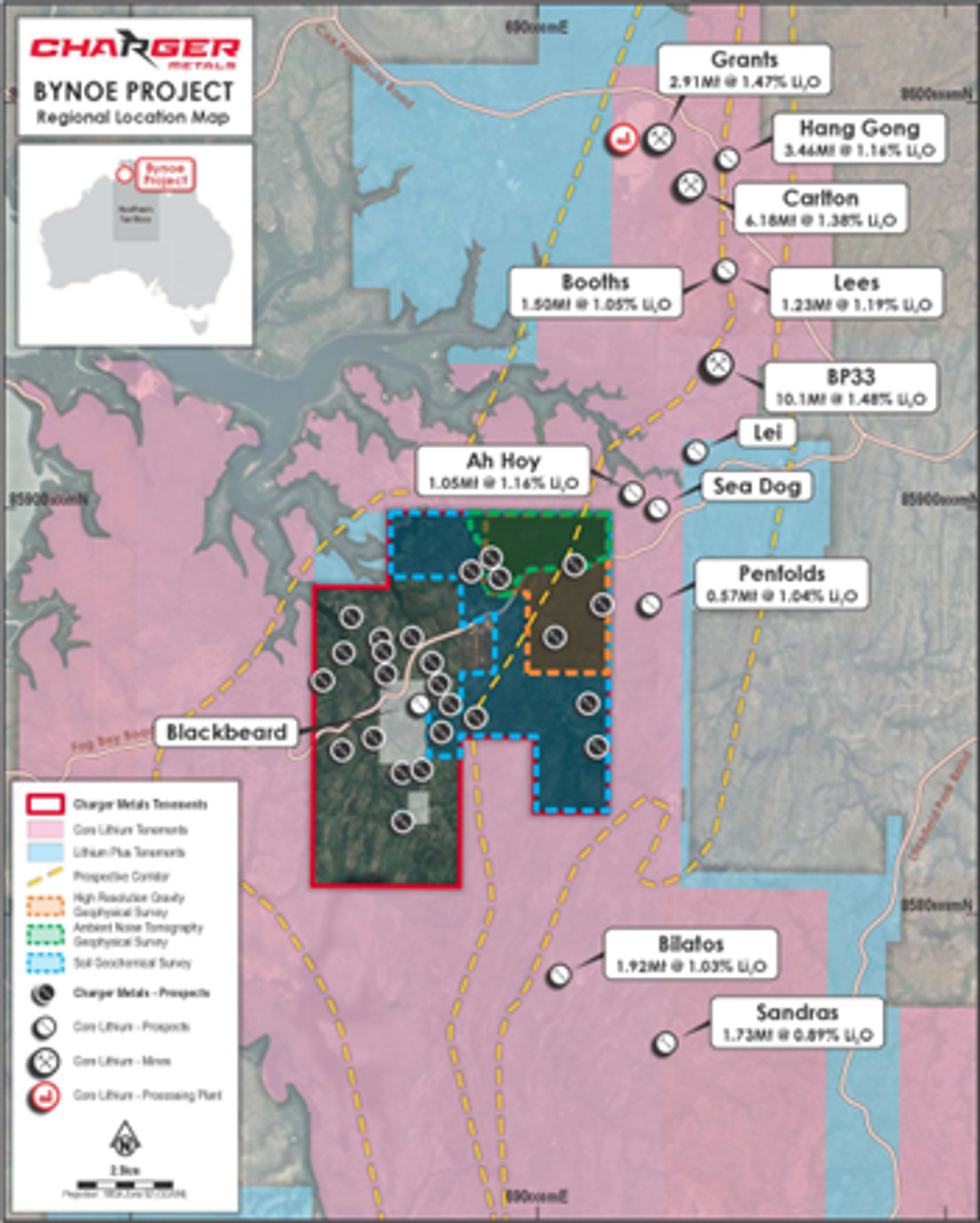
However, the fractionation within the lithium- caesium-tantalum (“LCT”) pegmatites is not homogeneous, with the spodumene content of the pegmatite intersections inconsistent and low-grade.
Significant intersections to-date include:1
- 7m @ 0.96% Li2O from 107m, including
- 5m @ 1.13% Li2O from 108m (CBYRC023);
- 16m @ 0.65% Li2O from 185m, including
- 1m @ 1.91% Li2O from 198m (CBYRC024);2
- 12m @ 0.49% Li2O from 267m, including
- 4m @ 0.84% Li2O from 275m (CBYD003);
- 5m @ 0.73% Li2O from 104m, including
- 1m @ 1.05% Li2O from 108m (CBYRC042); and
- 6m @ 0.50% Li2O from 53m (CBYRC051).
Assay results for a further 6 holes remain outstanding and are expected over the next four weeks.
The Company has now completed an ANT geophysical survey in the northeastern portion of the Bynoe tenure (Figures 1 & 2). ANT is a form of passive seismic surveying that uses ambient sound waves to detect contrasting rock units, and has been used to successfully detect “blind” pegmatite systems that cannot be seen at surface. This is a particularly useful exploration tool at Bynoe to “see” below the strong weathering profile at surface to potentially detect large pegmatite systems that do not outcrop.
The Company has also completed a ground gravity survey over the northeastern portion of the Bynoe Project (Figures 1 & 2). Petrophysical testwork completed on drill core from the Company’s diamond drilling has shown a significant density contrast between the pegmatites and the metasedimentary country rock. As such, ground gravity has the potential to detect significant pegmatite systems at Bynoe, particularly when modelled in conjunction with the ANT survey results. Processing of the ANT and gravity data is underway with modelling and target generation expected to be finalised in October.
Concurrent to the geophysical surveys Charger has finalised infill surface geochemical surveys over key prospective areas at Bynoe (Figures 1 & 2). Areas of no previous sampling or wide-spaced (400m) sampling were infilled to 200m line spacing. Assays are pending with results expected in late October.
Charger’s Managing Director, Aidan Platel, commented:
“We are encouraged by the recent assay results, which confirm our observations of spodumene within pegmatites at three of the seven prospects we have drilled to-date at Bynoe. Whilst the lithium results have been low-grade, where there is smoke there is fire, and we remain confident of intersecting economic lithium mineralisation given the numerous (>20) prospect areas identified within the large tenement area.
Given the “masking” effect at surface from the seasonally wet conditions which leach the lithium from the significant weathering profile, lithium exploration at Bynoe is difficult using the more traditional exploration methods (e.g. rock chip sampling). As such, we have completed concurrent ANT and gravity surveys which have the ability to delineate new high priority drill targets that are not apparent at surface, across prospective yet underexplored areas of the Bynoe Project. We look forward to seeing the modelled results of these surveys in October.
In the meantime, preparations are underway to resume exploration programmes at our Lake Johnston Project, in Western Australia, which will include diamond and RC drill programmes at the Medcalf Spodumene Prospect.”
Click here for the full ASX Release
This article includes content from Charger Metals, licensed for the purpose of publishing on Investing News Australia. This article does not constitute financial product advice. It is your responsibility to perform proper due diligence before acting upon any information provided here. Please refer to our full disclaimer here.
CHR:AU
The Conversation (0)
11 December
Mining the Gap: 5 Forces Shaping North America’s Lithium Supply Chain
A convergence of industry investments, government initiatives and a shifting global trade dynamic is creating an environment ripe for the development of a North American battery supply chain, with lithium playing a leading role. These trends are reshaping the region’s industrial base and opening... Keep Reading...
10 December
Rock Bottom: Strategic Window for Ground-level Lithium Investment
When lithium prices hit bottom, savvy investors know that’s exactly where the next big discovery begins — literally. Beneath the surface of global markets and remote exploration grounds, new opportunities are forming in the wake of a sharp price reset and renewed geopolitical urgency.Recent... Keep Reading...
10 December
Liontown Resources Pens Lithium Offtake Agreement with China's Canmax
Liontown Resources (ASX:LTR,OTC Pink:LINRF) has executed a binding offtake agreement with Chinese conglomerate Canmax Technologies (SZSE:300390) as part of its strategy to diversify its customer base.“Listed on the Shenzhen Stock Exchange, Canmax is one of the world’s leading manufacturers of... Keep Reading...
08 December
Trading Halt
Jindalee Lithium (JLL:AU) has announced Trading HaltDownload the PDF here. Keep Reading...
05 December
Livium Receives A$663k in RsD Tax Incentive Rebates for VSPC
Livium Ltd (ASX: LIT) (“Livium” or the “Company”) advises that it has received A$663,000 in research and development ("R&D") tax incentive rebates from the Australian Tax Office for the 2025 financial year ("FY25"), relating to its wholly owned subsidiary VSPC Pty Limited ("VSPC"). The rebate... Keep Reading...
01 December
Why SQM Says Social Dialogue is Key to Sustainable Lithium
As scrutiny continues to intensify across the battery metals supply chain, the conversation around sustainability has moved far beyond carbon footprints. At this year’s Benchmark Week, Stefan Debruyne, director of external affairs at Sociedad Quimica y Minera de Chile (SQM) (NYSE:SQM), made that... Keep Reading...
Latest News
Latest Press Releases
Related News
TOP STOCKS
American Battery4.030.24
Aion Therapeutic0.10-0.01
Cybin Corp2.140.00
